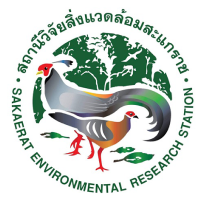Keywords :
Antibiotic Susceptibility; Deforestation; Land Degradation; Multivariate Analysis; Soil Bacterial
Community; Thailand
บทคัดย่อ :
In this study, multivariate profiles of soil bacterial communities were used to measure the intensity of land
degradation as a result of deforestation of a Thai tropical forest and subsequent human activities. Soils were
sampled at a dry evergreen forest (the original vegetative type), a dry deciduous forest (moderately disturbed)
and bare ground (the most severely degraded). The soil bacterial communities were profiled by the antibiotic
disk diffusion (ADD) method. Based on antibiotic susceptibility profiles of soils, the ADD method may give soil
quality measures that are unique in their meanings. Principal component analysis extracted principal components
from the antibiotic susceptibility and soil physico-chemical data sets. Both the first principal components showed
the degradation gradient in the principal component score plots. Redundancy analysis showed that decreases in
soil moisture, total carbon content and electrical conductivity involved in the degradation correlated significantly
to changes in the antibiotic susceptibility profile. Multiple regression analyses between values of a soil fertility
index (SFT) or a soil evaluation factor (SEF) and scores on the principal components or redundancy analysis
ordination axes indicated that the first principal component or redundancy analysis ordination axis significantly
explained the SFI and the SEF models (p<0.002). The formulae that quantified the intensity of the land
degradation are given. This scheme is expected to help the conservation and rehabilitation of lands by predicting
results, describing a gradient of interest and suggesting preferable soil conditions for particular goals.
เอกสารอ้างอิง :
Doi, R. (2005) Human-induced land degradation gradient shown by antibiotic. Nature and Human Activities, 9, 33-45, 2005



